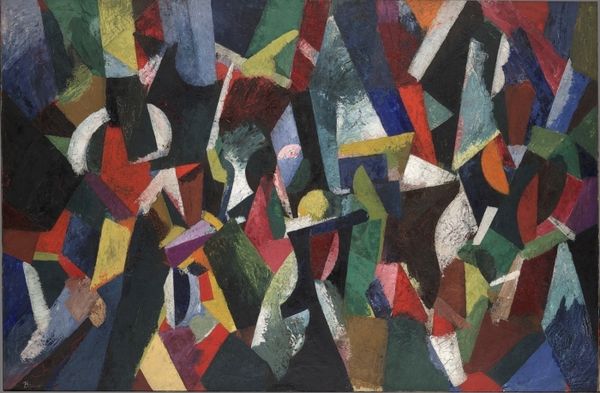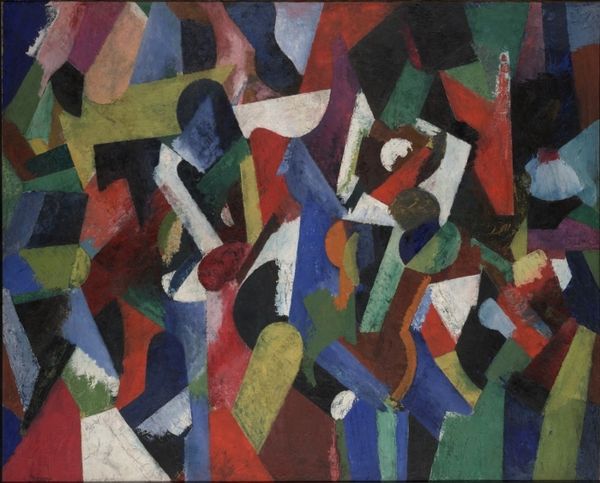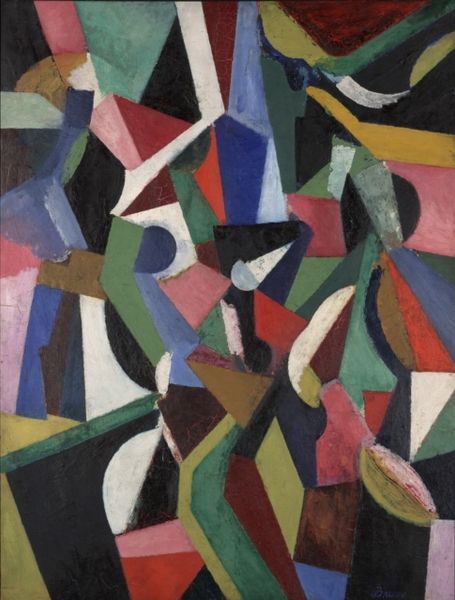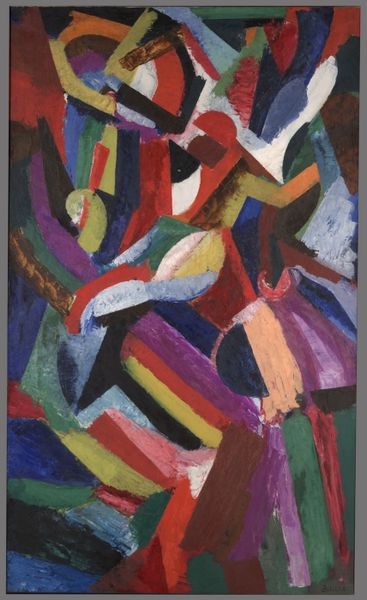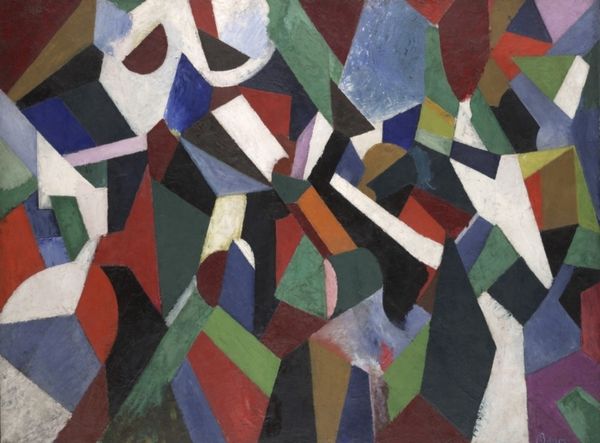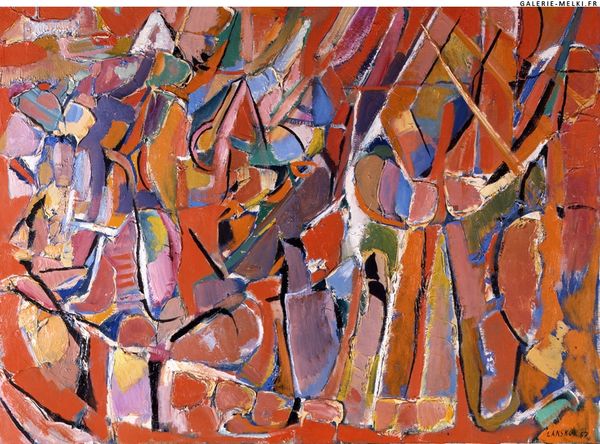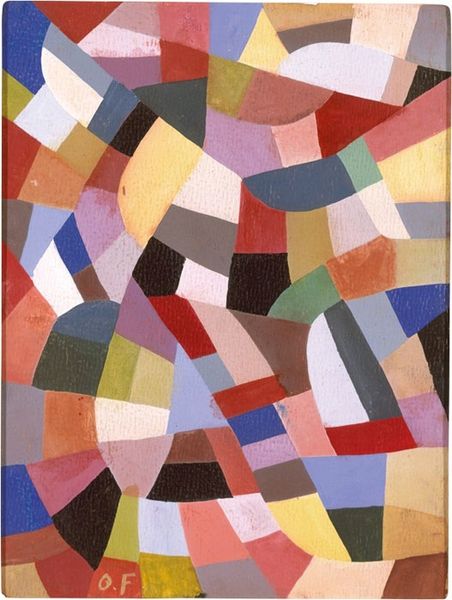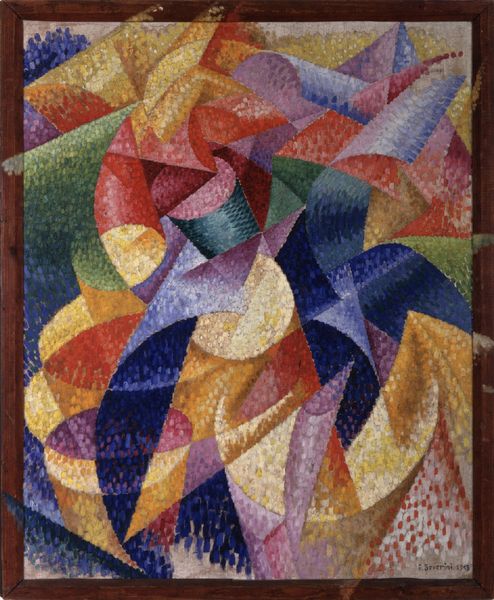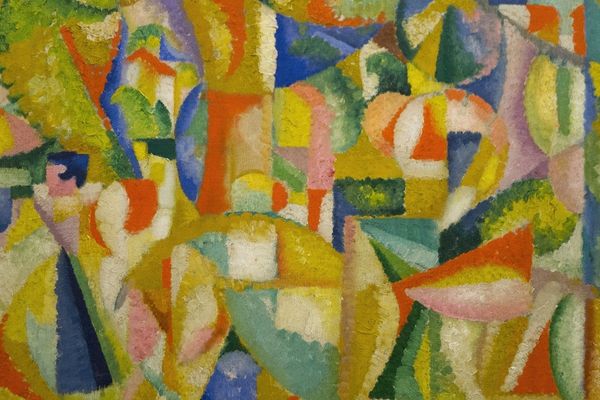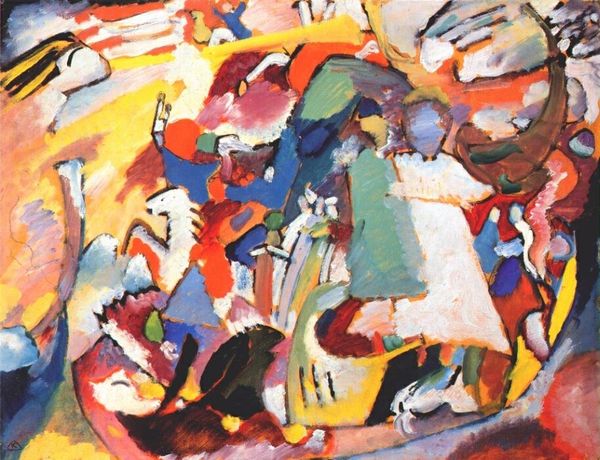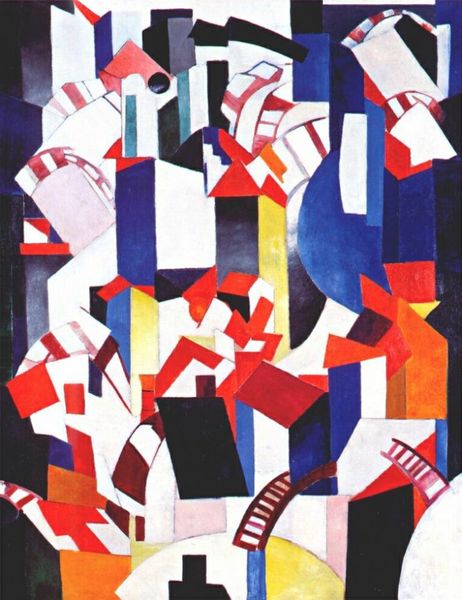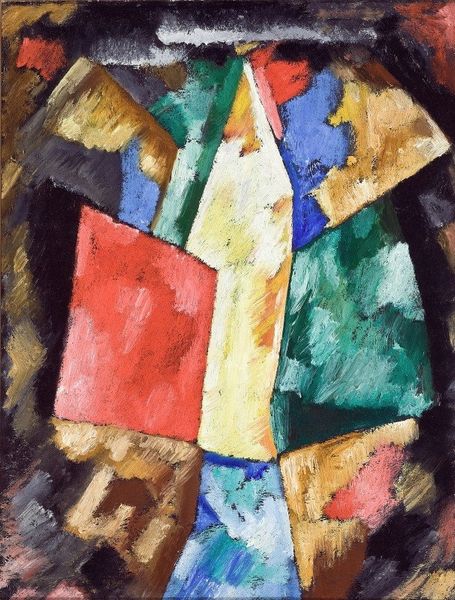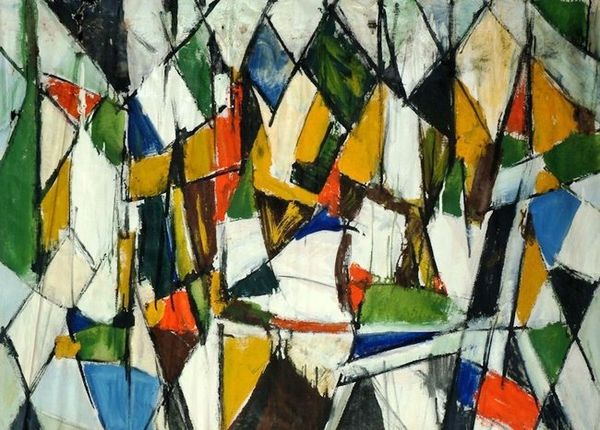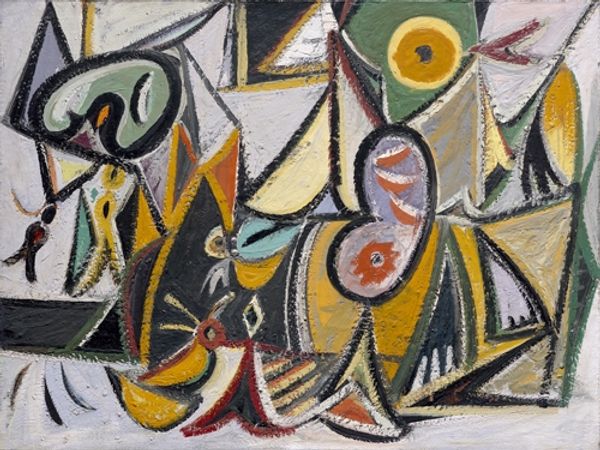
painting, oil-paint
#
cubism
#
abstract expressionism
#
abstract painting
#
painting
#
oil-paint
#
geometric pattern
#
geometric
#
abstraction
#
modernism
Copyright: Public domain
Curator: Standing before us is Patrick Henry Bruce’s “Composition VI,” an oil on canvas completed in 1916. Editor: My initial impression is one of controlled chaos. There’s a vibrant energy in the clashing colors and geometric shapes, yet there's also an underlying structure, as if these elements are carefully positioned within a contained space. Curator: Indeed, the Cubist influence is evident in Bruce's deconstruction of form. He's dismantling recognizable objects and reassembling them into an abstract, almost puzzle-like composition. Notice the interplay of color, used not descriptively, but as a structural element, defining planes and creating spatial relationships. Editor: But the question is, what is Bruce reacting to, representing or refusing in the process of moving to total abstraction? Was there a growing disenchantment with industrialization, perhaps a withdrawal from representing objects readily reproduced, easily available? How did World War I feed such formalist impulses? Curator: These are excellent considerations! But Bruce also moves within a system of aesthetic logic, focusing on how lines, colors, and forms communicate purely on their own terms. This work represents a radical departure from representational art. Semiotically speaking, the artwork opens itself to free interpretation through non-predefined signifiers. Editor: But can we really separate artistic innovation from the sociopolitical climate? Remember the Armory Show of 1913? This was an epoch-defining moment, galvanizing the birth of modernism in America, and shifting patronage to non-academic avant-garde institutions. It encouraged Bruce to embrace abstraction, for sure, but we need to study how social and economic structures enabled this choice! Curator: Your argument holds merit. The patronage networks supporting avant-garde artists certainly played a role in enabling such experimentation. Nonetheless, it's important not to undermine Bruce's exploration of the intrinsic qualities of painting, divorced from overt narrative or didactic messages. He uses the oil medium here in very idiosyncratic way. Editor: But maybe that radical experiment itself served as a form of silent political declaration...I can't help thinking how works of this era defied established social expectations and spurred cultural change. Curator: I see your point. These avant-garde movements did contest societal norms. But from a Formalist standpoint, the historical perspective risks overshadowing the painting’s fundamental essence. I suppose one must embrace paradox here, in which the artwork itself operates both inside and outside its own temporal context. Editor: True. As usual, these exchanges help to nuance interpretations, whether focusing on what surrounds an artwork, or what it offers by itself. Thanks for opening up fresh possibilities of reading “Composition VI”!
Comments
No comments
Be the first to comment and join the conversation on the ultimate creative platform.
